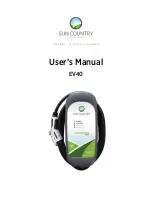
2
IMPORTANT
Please read this manual immediately on receipt of battery before unpacking and installing.
Failure to comply with these instructions will render any warranties null and void.
CARE FOR YOUR SAFETY
Handling
DataSafe
®
HX+/HX batteries are supplied in a fully
charged state and must be unpacked carefully to
avoid very high short-circuit currents between
terminals of opposite polarity. Use care when
handling and moving batteries. Appropriate lifting
equipment must be used.
Keep flames away
In case of accidental overcharge, a flammable
gas can leak off the safety vent.
Discharge any possible static electricity from
clothes by touching an earth connected part.
Tools
Use tools with insulated handles.
Do not place or drop metal objects on the battery.
Remove rings, wristwatch and articles of clothing
with metal parts that may come into contact with
the battery terminals.
Dispose at registered
waste handling
facility
RECEIVING THE SHIPMENT
Carefully examine the battery shipment upon arrival for any signs of transit
damage and that it agrees with the materials list or packing slip. Be very
careful not to inadvertently discard any accessories contained in the
packing material.
Batteries contain sulphuric acid in glass fibre separators.
Use rubber gloves when handling broken or damaged containers in case of
acid leakage.
STORAGE
Store DataSafe
®
HX+/HX batteries in a dry, clean and preferably cool
location.
Since the batteries are supplied charged, storage time is limited. In order to
easily charge the batteries after prolonged storage, it is advised not to store
them more than:
• 6 months at ambient temperature no warmer than 25°C
• 4 months at 30°C
• 2 months at 40°C
Give the batteries a freshening charge before the end of the recommended
storage interval. A refreshing charge shall be performed using 2.26 V/cell at
25°C for 96 hours or until the charge current does not vary for a 3 hour
period.
The necessity of a charge can also be determined by measuring the open
circuit voltage of a stored battery. Charging is advised if the voltage drops
below 2.07 V/cell.
Maximum total storage prior to installation is 2 years from the date of
shipment from the factory to the customer. Freshening charges are
required before the end of the storage time period or more frequently, as
noted above. Failure to observe these conditions may result in greatly
reduced capacity and service life.
FAILURE TO CHARGE AS NOTED VOIDS THE BATTERY’S WARRANTY.
INSTALLATION
Install in a clean and dry area. DataSafe HX+/HX batteries release minimal
amounts of gas during normal operation (gas recombination efficiency
≥
95%). They can be installed near the main equipment. Batteries must be
installed in accordance with local, national and international regulations and
manufacturers instructions.
Temperature
Avoid placing the battery in areas of high temperature or in direct sunlight.
The battery will give the best performance and service life when working at a
temperature between 20°C and 25°C. The maximum operating temperature
range is -30°C to +45°C.
Ventilation
Under normal conditions gas release is very low and natural ventilation is
sufficient for cooling purposes and inadvertent overcharge, enabling DataSafe
HX+/HX batteries to be used safely in offices and with main equipment.
However care must be taken to ensure adequate ventilation when placed in
cabinets. Batteries must not be placed in sealed cabinets.
Security
All installation and ventilation must comply with the current local, national
and international regulations.
Mounting
EnerSys
®
battery racks or cabinets are recommended for proper installation.
Assemble the rack according to instructions. Place the monoblocs or cells on
the rack and arrange the positive and the negative terminals for connection
according to the wiring diagram. Check that all contact surfaces are clean and
apply the bloc or cell connectors and the terminal screws. Tighten the screws
securely. Follow the polarity to avoid short circuiting of cell groups. Finally
connect the battery terminals. It is important that the battery is mounted
firmly.
Installation of High Voltage Batteries
A battery consisting of 60 or more cells connected in series presents
additional hazards and the following notes on installation should be
employed.
• Limit the battery voltage by omitting inter-cell connectors to give a
maximum section voltage of 120V or 60 cells.
• The omitted inter-cell connectors should be chosen such that they are in an
easily accessible position. These connectors should only be fitted with the
load and charger isolated and when the rest of the installation is complete.
• Never work alone on high voltage batteries.
• Always use insulated tools and wear approved high voltage insulating
gloves.
• When supplied, fit the "high voltage battery" warning labels in a prominent
position.
Torque
Tighten the nuts or bolts to the recommended levels of fastening torque
indicated on the product label (if applicable). A loose connector can cause
problems in charger adjustment, erratic battery performance, possible
damage to the battery and/or personal injury.
CELLS IN PARALLEL STRINGS
When using constant voltage chargers, ensure that the connections
between the charger and the end of each string within the battery have the
same electrical resistance. Parallel strings must be limited to five strings.
CHARGING
Float Voltage
The float/charge voltage is 2.26 V per cell at 25°C. When the average
ambient temperature deviates more than ± 5°C from the reference, it is
necessary to adjust the float voltage as indicated in the following table :
No smoking, no naked flames,
no sparks
Electrolyte is corrosive
Clean all acid splash in eyes or on
skin with plenty of clean water.
Then seek medical help. Acid on
clothing is to be washed with water
Danger
Warning: Risk of fire, explosion, or burns.
Do not disassemble, heat above 60ºC, or incinerate.
Avoid any short circuit. Metallic parts under voltage on the
battery, do not place tools or items on top of the battery
Battery must be
recycled
Protect eyes
from electrolyte
Read
instructions
Do not charge in
sealed container






















